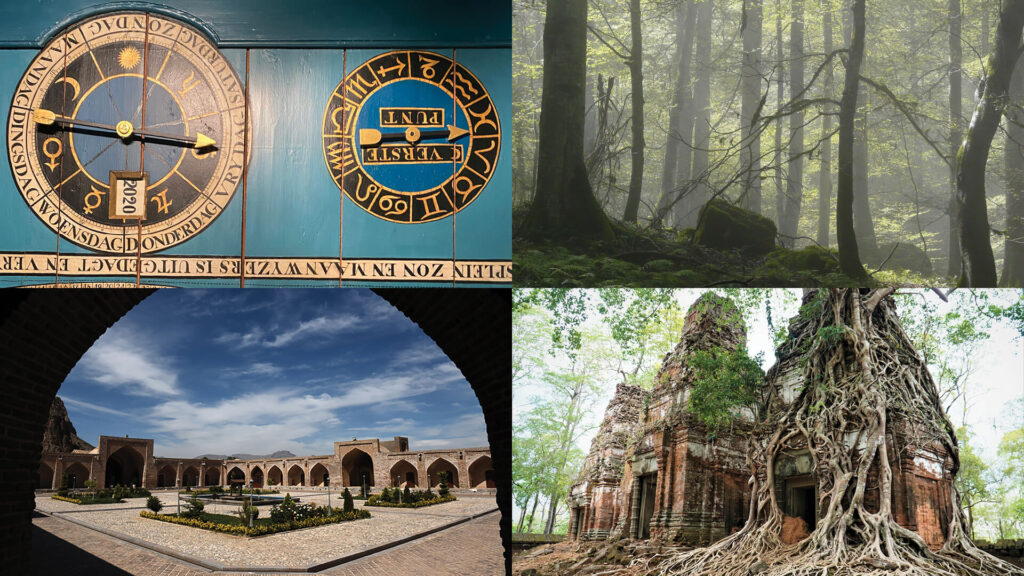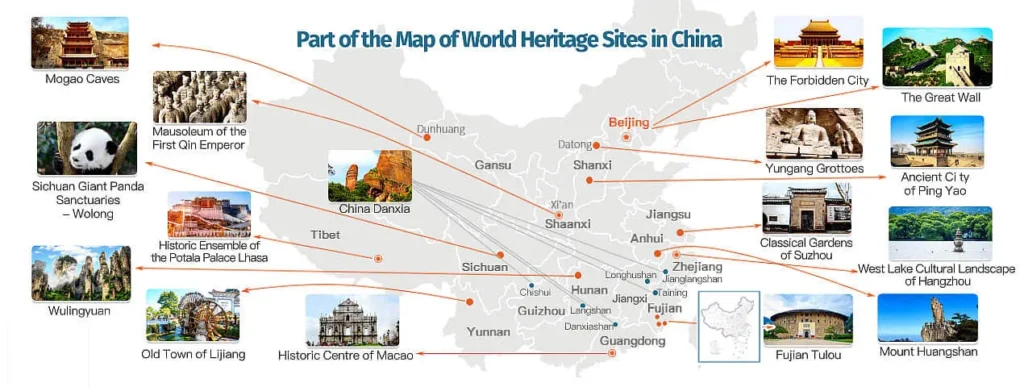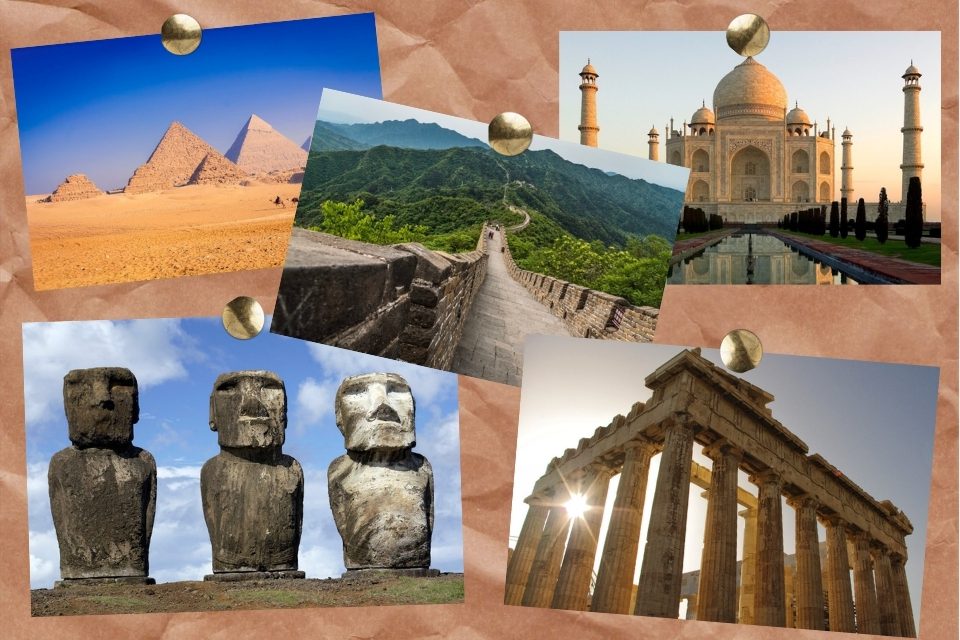The concept of World Heritage, as defined by UNESCO (United Nations Educational, Scientific and Cultural Organization), encompasses cultural, natural, and mixed sites of outstanding universal value that are considered to be of exceptional importance to humanity. These designated sites, known as UNESCO World Heritage sites, represent a diverse array of cultural and natural wonders that embody the collective heritage of humanity and serve as a testament to our shared history, identity, and legacy.
Preserving Our Shared Heritage: The Significance of UNESCO World Heritage Sites

Cultural Significance of World Heritage:
UNESCO World Heritage sites of cultural significance include iconic landmarks, historic monuments, archaeological sites, and cultural landscapes that bear witness to the creativity, ingenuity, and achievements of past civilizations. From the majestic pyramids of Egypt and the awe-inspiring Taj Mahal in India to the ancient city of Petra in Jordan and the historic center of Florence in Italy, these sites offer invaluable insights into human history, art, architecture, and cultural traditions.
Natural Value of World Heritage:
UNESCO World Heritage sites of natural significance encompass diverse ecosystems, wilderness areas, national parks, and geological formations that showcase the planet’s biodiversity, geological heritage, and ecological importance. From the pristine wilderness of Yellowstone National Park in the United States and the Great Barrier Reef in Australia to the Serengeti National Park in Tanzania and the Galápagos Islands in Ecuador, these sites provide vital habitats for wildlife, protect endangered species, and offer opportunities for scientific research, education, and sustainable tourism.
Protection and Conservation:
The designation of a site as a UNESCO World Heritage site confers international recognition and imposes responsibilities on governments and local authorities to protect, preserve, and sustainably manage wdbos these irreplaceable treasures for future generations. Conservation efforts may include measures to prevent degradation, mitigate threats, promote sustainable tourism, engage local communities, and raise awareness about the importance of preserving our cultural and natural heritage.

Challenges and Threats:
Despite their universal value and significance, UNESCO World Heritage sites face numerous challenges and threats, including urbanization, pollution, climate change, natural disasters, overexploitation, and armed conflict. These threats can jeopardize the integrity, authenticity, and survival of these sites, underscoring the need for concerted action and international cooperation to address pressing conservation issues and safeguard our shared heritage.
Promoting Sustainable Development:
UNESCO World Heritage sites have the potential to contribute to sustainable development by generating economic benefits, supporting local livelihoods, fostering cultural exchange, and promoting environmental stewardship. Responsible tourism practices, community engagement, and partnerships with stakeholders are essential for balancing the preservation of heritage with the needs of local communities and ensuring that these sites remain sources of pride, inspiration, and wonder for future generations.
UNESCO World Heritage sites represent the pinnacle of human achievement and natural beauty, serving as windows into our past, present, and future. By recognizing the universal value of these sites, promoting their protection and conservation, and fostering sustainable development, we can ensure that our shared heritage continues to inspire, educate, and enrich the lives of people around the world for generations to come.
Exploring the Advantages and Disadvantages of World Heritage Designation
The UNESCO World Heritage program, aimed at preserving and protecting sites of outstanding universal value, plays a crucial role in safeguarding our cultural and natural heritage for future generations. While the designation of a site as a World Heritage site offers numerous benefits, it also presents certain challenges and considerations that warrant examination.
Advantages of World Heritage Designation:

- Recognition and Prestige: Being designated as a UNESCO World Heritage site provides international recognition and prestige, highlighting the cultural, historical, or natural significance of the site on a global scale. This recognition can enhance a site’s profile, attract visitors and tourists, and promote cultural exchange and dialogue.
- Preservation and Conservation: World Heritage designation comes with a commitment to preserving and protecting the designated site for future generations. Governments and local authorities are required to implement measures to conserve the site’s integrity, authenticity, and cultural or natural values, thereby ensuring its survival in the face of threats such as urbanization, pollution, and climate change.
- Tourism and Economic Benefits: UNESCO Heritage sites often serve as major tourist attractions, drawing visitors from around the world and contributing to local economies through tourism-related activities such as accommodations, restaurants, transportation, and souvenir sales. The economic benefits derived from tourism can support local livelihoods, create employment opportunities, and stimulate economic growth in surrounding communities.
- Cultural Exchange and Education: World Heritage sites serve as platforms for cultural exchange, education, and appreciation of diverse heritage and traditions. Visitors have the opportunity to learn about the history, architecture, art, and customs of different cultures and civilizations, fostering mutual understanding, respect, and dialogue among peoples from various backgrounds.
Disadvantages of World Heritage Designation:
- Overcrowding and Overtourism: The popularity of UNESCO Heritage sites can lead to issues of overcrowding and overtourism, particularly during peak seasons. Large crowds of visitors can strain infrastructure, damage fragile ecosystems, and disrupt local communities, diminishing the visitor experience and compromising the integrity of the site.
- Commercialization and Exploitation: The commercialization of World Heritage sites, driven by tourism and economic interests, can result in the commodification and exploitation of cultural and natural resources. Uncontrolled development, souvenir vendors, and commercial enterprises within or adjacent to the site may detract from its authenticity and heritage value, leading to concerns about commercial exploitation and loss of cultural integrity.
- Maintenance and Management Challenges: Managing and maintaining UNESCO World Heritage sites requires significant resources, expertise, and coordination among multiple stakeholders, including governments, local communities, NGOs, and international organizations. Challenges such as funding constraints, inadequate infrastructure, and lack of capacity can hinder conservation efforts and jeopardize the long-term sustainability of the site.
- Political and Social Controversies: The designation of a site as a UNESCO Heritage site can sometimes be politically or socially contentious, particularly in cases where there are competing interests or conflicting interpretations of history, identity, or heritage. Disputes over ownership, management, and representation may arise, leading to tensions and controversies among stakeholders.
Conclusion:
While UNESCO World Heritage designation offers numerous advantages in terms of recognition, preservation, tourism, and cultural exchange, it also presents challenges and considerations that require careful management and oversight. By addressing issues such as overcrowding, commercialization, maintenance, and political controversies, stakeholders can work towards ensuring that World Heritage sites continue to fulfill their mission of preserving our shared cultural and natural heritage for the benefit of present and future generations.
Read More Article About “Tai Chi: Tracing the Ancient Roots of a Timeless Practice“

